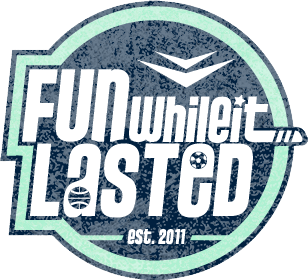National Professional Soccer League (1991-1992)
Tombstone
Born: September 13, 1990 – NPSL expansion franchise
Folded: September 27, 1991
First Game:
Last Game:
NPSL Championships: None
Arenas
Knickerbocker Arena (15,500)
Opened: 1990
Glens Falls Civic Center (4,800)
Opened: 1979
Branding
Team Colors:
Ownership
Owners:
- 1990-1991: George Keleshian, Afrim Nezaj, et al.
- 1991: Joseph O’Hara
Background
Doomed indoor soccer club that muddled through a single season in upstate New York during the winter of 1990-91. Lack of community interest and investor litigation soon conspired to wipe the New York Kick off the map.
A group of nearly forty small investors led by George Keleshian and Afrim Nezaj labored for nearly two years to bring an American Indoor Soccer Association (AISA) franchise to Albany. (By the time the club was purchased in September 1990, the league had changed its name to the National Professional Soccer League). While the bid was in progress, Albany opened the $69 million Knickerbocker Arena in January 1990. On February 18, 1990, the expansion backers promoted an AISA regular season game between the Chicago Power and the Memphis Rogues at Knickerbocker Arena to test community interest. The game drew an announced crowd of 8,150, which was considered quite encouraging.
The summer of 1990 came and went. The NPSL finally awarded the Albany franchise in September, leaving the unwieldy and inexperienced owners less than a month to prepare for the 1990-91 league opener. The late start also meant that the Kick could not secure 20 home dates at Knickerbocker Arena. The team had to augment their schedule with dates at the Glens Falls Civic Center, located 45 minutes away.
Chaos
The season was a disaster from the start. Attendance at the 15,000-seat Knickerbocker Arena was less than 2,000 per match. On the carpet, the team floundered under Afrim Nezaj, a former minor league player and member of the Kick’s ownership group. Nezaj was relieved of his coaching duties midway through the year, but the change didn’t help. The Kick would finish the season with a 3-37 record. The club was outscored 646-284. Many of the team’s experienced indoor veterans walked away when the undercapitalized owners demanded a 50% pay cut in midseason.
In February 1991, with the team on the brink of failure, Albany-based sports investor Joseph O’Hara stepped forward to rescue the Kick. Over the past two years, O’Hara had built a small empire of capital region sports properties with partner Glenn Mazula. The pair owned the Albany Patroons of the Continental Basketball Association and the Albany Firebirds of the Arena Football League, both of which also played at Knickerbocker Arena. (Mazula was not involved with O’Hara’s Kick bailout, presumably to his eternal relief).
Demise
O’Hara helped the Kick finish out the remainder of the season, although he never did enjoy a Kick win. The club lost it’s final 13 matches after he took over. O’Hara quickly got into a dispute with the previous ownership over terms of the sale. Facing litigation and a projected mid-six figure loss, O’Hara pulled out of the NPSL in late September 1991, just weeks before training camp, forcing the league to re-work its schedule. The league eventually sued O’Hara as well.
The litigation over the New York Kick stretched in the mid-1990’s, far outliving the brief 12-month life of the soccer club itself.
Trivia
The Kick’s .075 winning percentage (3 wins, 37 losses) was the worst in the 17-year history of the American Indoor Soccer Association/National Professional Soccer League from 1984 through 2001.
In Memoriam
Kick forward Carlos Salguero died of cancer on December 28, 2006. He was 51.
Downloads
American Indoor Soccer Association, Inc. vs. Capital District Sports & Entertainment, Inc Lawsuit
Links
###


2 Responses
It should be noted that technically the NPSL relocated the Indiana Kick (based in Fort Wayne, IN) that played the 1989-90 season.
Alan – Trying to figure that out. All of the press announcements look like an expansion franchise that just seemed to have the same name, and perhaps some assigned player rights from Indiana. But doesn’t seem to be the same franchise, regardless of what Wikipedia says.